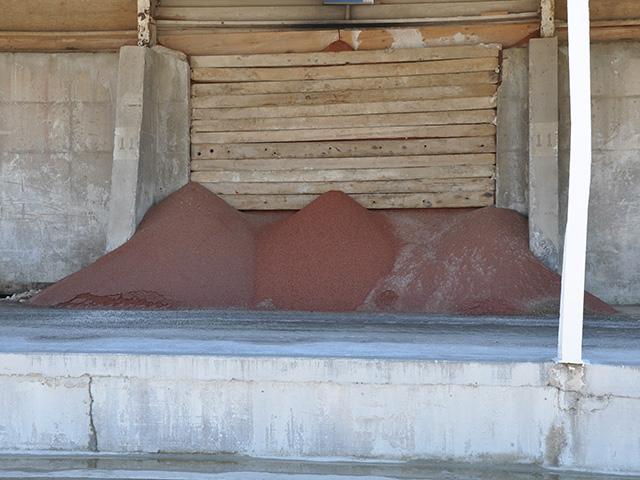Global Fertilizer Market Update
USDA Ag Outlook: Changes Coming to Global Fertilizer Industry, Markets
OMAHA (DTN) -- After record-high fertilizer prices in recent years, the global fertilizer industry could be entering a new era, industry experts said at the USDA Agricultural Outlook Forum last week. But even though prices have fallen from record highs, elevated fertilizer prices will still have an effect on farmers across the globe.
In addition, how investments are being made in the fertilizer industry is changing. Fertilizer producers are in the midst of decarbonizing, and this will have a huge effect on how nutrients are produced in the future.
FERTILIZER AT CROSSROADS
Laura Cross, director of market intelligence for the International Fertilizer Association, said in a presentation at the USDA Agricultural Outlook Forum last week that the world fertilizer market is at a crossroads right now.
One myth about fertilizer is that there is a shortage of fertilizer in the world. This is simply not true, she said.
While there were several production issues last year, led by Russia invading Ukraine, production levels really did not see as large of declines as were expected after the war began.
Global phosphorus fertilizer production actually increased from 2021 to 2022, Cross said. And while nitrogen and potash production were curtailed somewhat during this time, the large drop-off in production was never seen, she said.
"Global fertilizer production is expected to increase in 2023 with urea capacity up 2% and phosphorus production 7% higher," Cross said. "Potash production is expected to fall about 14%, but it would only be about a 5% drop compared to 2019."
MORE AFFORDABLE FERTILIZERS
The other fertilizer myth is that prices are still at record-high levels. Again, this is not true, Cross said.
After Russia invaded Ukraine, many thought fertilizer production would suffer and that this would cause prices to skyrocket. That did not happen, and since the middle of last year, global fertilizer prices have been on the decline due to better-than-expected production, she said.
Russia continues to export fertilizer across the world despite sanctions from certain countries, Josh Linville, vice-president of fertilizers for StoneX, said in his presentation.
P[L1] D[0x0] M[300x250] OOP[F] ADUNIT[] T[]
Russia is the world's leading producer of anhydrous, and sanctions have not stopped production of the nitrogen fertilizer. The nation's urea production has also been able to continue, in part, because this is a product that is easily transported, he said.
Linville believes one important storyline in the global fertilizer market this year could be U.S. farmers switching to different forms of nitrogen due to different affordability indexes before the 2023 growing season. There is only so much supply of urea, UAN and anhydrous fertilizers.
An affordability index using New Orleans, Louisiana, urea, UAN and anhydrous prices and factoring in new-crop corn ratios shows the form of nitrogen that is the most affordable right now is urea, followed by UAN and then anhydrous, he said.
"This could cause some shifts in nitrogen fertilizer demand," Linville said.
However, U.S. farmers are running out of time to assess their nitrogen fertilizer form needs. If they wait until April 1 to find enough of the form of nitrogen they want, there is probably not going to be enough, and it will be too late, he said.
Cross said while there are certainly fertilizer supply challenges across the world, fertilizer affordability is much better heading into the 2023 growing season compared to the 2022 growing season.
"An example of this would be fertilizer prices in the African country of Ghana, where prices are 8% lower in January 2023 compared to January 2022," she said.
Cross said the global fertilizer market right now is sitting at an in-season impasse. Many farmers, seeing nutrient prices moving lower, are not buying and are in wait-and-see mode.
This delay in application can only go on for so long, she said. At some point if farmers wait too long, applications will not be made in some parts of the world, and production could be at risk.
The global fertilizer industry is also seeing major changes in how investments are made. The industry is in the midst of decarbonizing, Cross said.
In the past, fertilizer companies saw that investments they made in their facilities were pretty much straightforward: an investment of a certain amount would give a certain amount back. Now, however, the situation is less black-and-white with the added costs of decarbonization.
"New expansions will be driven by a local approach to regulations, incentives and renewable energy economies," Cross said.
HIGH FERTILIZER PRICES AFFECT POOR
High fertilizer prices hit all farmers hard, but they affect small, subsistence farmers and poor people across the world even harder. After decades of decline, global hunger affected 46 million more people in 2021 compared to 2020, according to Hope Michelson, a University of Illinois associate professor who studies the dynamics of poverty and insecurity in low-income countries.
Small farms produce roughly 35% of the world's food. These small farms are often less than 2 hectares (about 5 acres), she said.
Large increases in fertilizer prices have a devasting effect on the chronically food insecure, Michelson said.
"High fertilizer prices can tip these people into even worse situations," Michelson said.
An example of this is how Kenyan farmers responded to higher fertilizer prices. Fertilizer prices increased 60% last year in the main grain-growing areas, and this, in turn, caused total fertilizer purchases by Kenyan farmers to drop 13% to 54%. Yields dropped with less fertilizer applied, and maize prices jumped considerably.
"This put 10% of the Kenya population at risk of food insecurity," she said.
Michelson said fertilizer prices, while no longer at record highs, are still fairly expensive to small farms in poor countries across the world.
Food security requires significant and sustained investment in agricultural production in low-income countries. Access to fertilizer is only part of what is needed, as genetic improvements in both grains and livestock, investment in technology, Extension funding, infrastructure improvements and risk protection products are all needed, she said.
"These investments are a means to protect already vulnerable households, communities and regions from crises to come," Michelson said.
Russ Quinn can be reached at Russ.Quinn@dtn.com
Follow him on Twitter @RussQuinnDTN
(c) Copyright 2023 DTN, LLC. All rights reserved.






